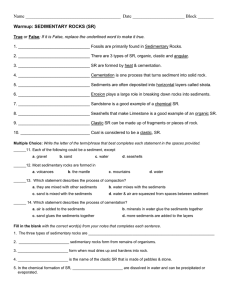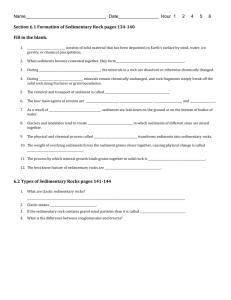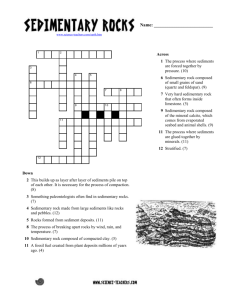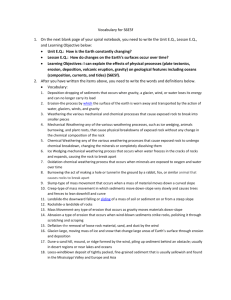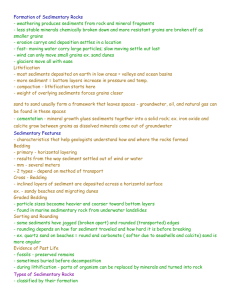1: What is the first step in the formation of sedimentary rocks
advertisement
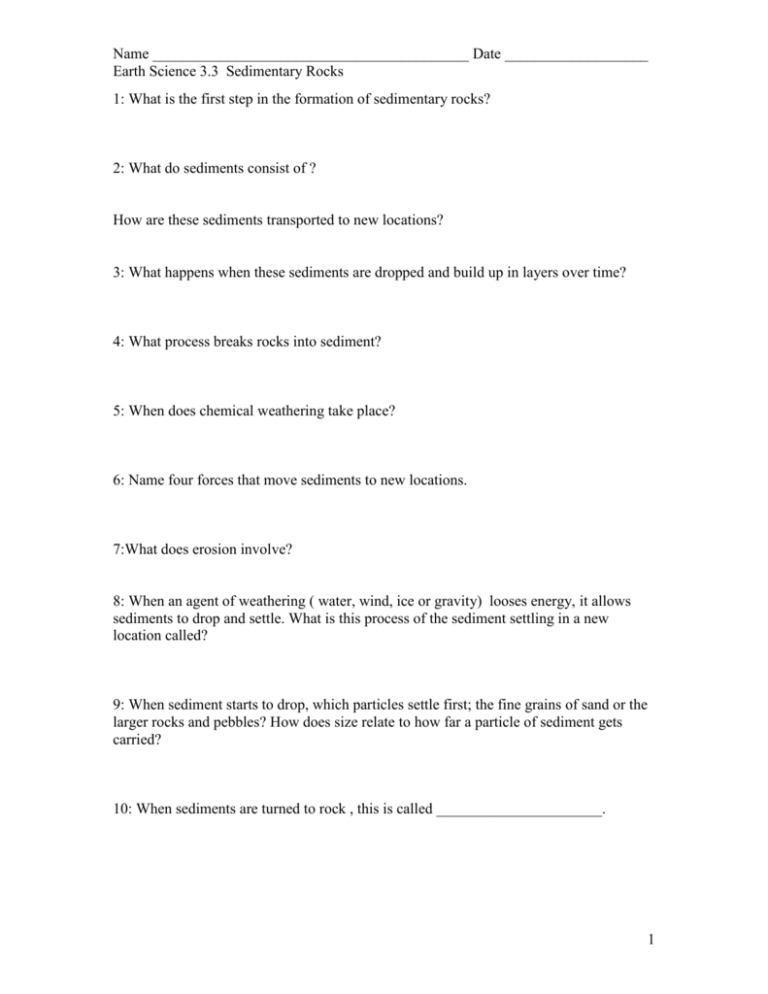
Name __________________________________________ Date ___________________ Earth Science 3.3 Sedimentary Rocks 1: What is the first step in the formation of sedimentary rocks? 2: What do sediments consist of ? How are these sediments transported to new locations? 3: What happens when these sediments are dropped and build up in layers over time? 4: What process breaks rocks into sediment? 5: When does chemical weathering take place? 6: Name four forces that move sediments to new locations. 7:What does erosion involve? 8: When an agent of weathering ( water, wind, ice or gravity) looses energy, it allows sediments to drop and settle. What is this process of the sediment settling in a new location called? 9: When sediment starts to drop, which particles settle first; the fine grains of sand or the larger rocks and pebbles? How does size relate to how far a particle of sediment gets carried? 10: When sediments are turned to rock , this is called ______________________. 1 Name __________________________________________ Date ___________________ Earth Science 3.3 Sedimentary Rocks 11: What two processes both contribute to this process of layers of sediment hardening into rock? 12: What is the name of the process that squeezes or compacts sediment? 13: What happens to the water in the sediment materials during compaction? 14: How does cementation take place? Are all rocks formed by cementation the same in appearance? 15: Describe the difference between a conglomerate rock and a sandstone rock. 16: What two main group classifications do sedimentary rocks fall into depending on their formation process? 17: The most common materials found in clastic sedimentary are ___________ and ________________. 18: Clastic rocks can be grouped by the size of the sediments in the rocks. When rounded, gravel sized or larger rocks make up the rock, the rock is said to be a _________________________ . When particles are angular, the rock is called _____________________. When particles are fine sand sized grains, the material is called ____________________. 19: ___________________________ form when dissolved substances separate from water solutions, by evaporation or boiling away. 20: _____________________ are often made up of the shells and skeletons of organisms that settle to the sea floor. 21: Name two types of biochemical sediment rock. 22: How can sedimentary rock provide clues to the conditions that may have once occurred in an area. Give two examples. 2





